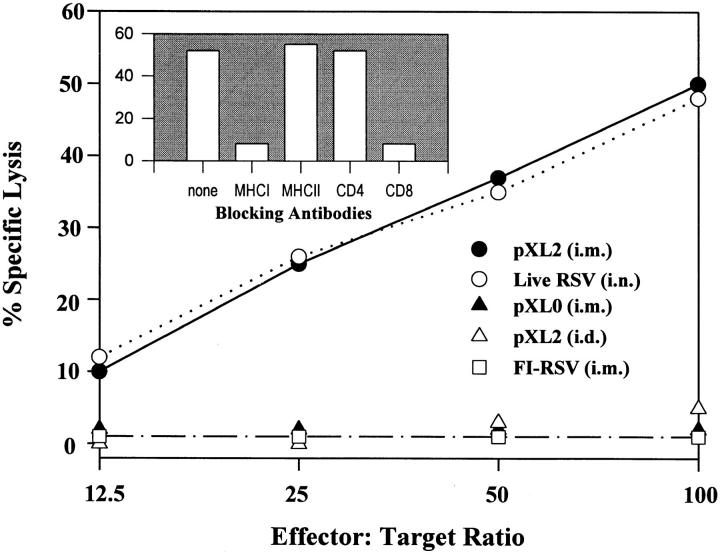Figure 2.
Characterization of RSV-specific CTLs induced by pXL2. Mice were immunized with pXL2 (100 μg, i.m. or i.d.), pXL0 (100 μg, i.m.), RSV (106 PFU, i.n.), or FI-RSV (100 μl, i.m.) at 0 and 6 wk. 4 wk after the boost, immune splenocytes were stimulated with γ-irradiated syngeneic splenocytes infected with RSV. CTL activity was assessed in a standard 4-h 51Cr-release assay 5 d later using uninfected BC cells and persistently RSV-infected BCH4 fibroblasts as targets. To determine the phenotype of CTLs induced by intramuscular pXL2-immunization, the effector cells were incubated with pools of either anti-CD4 or anti-CD8 mAbs and the targets with either anti-MHC class I or class II antibodies (blocking antibodies), respectively, before the CTL assay performed at 100:1 E/T ratio.

